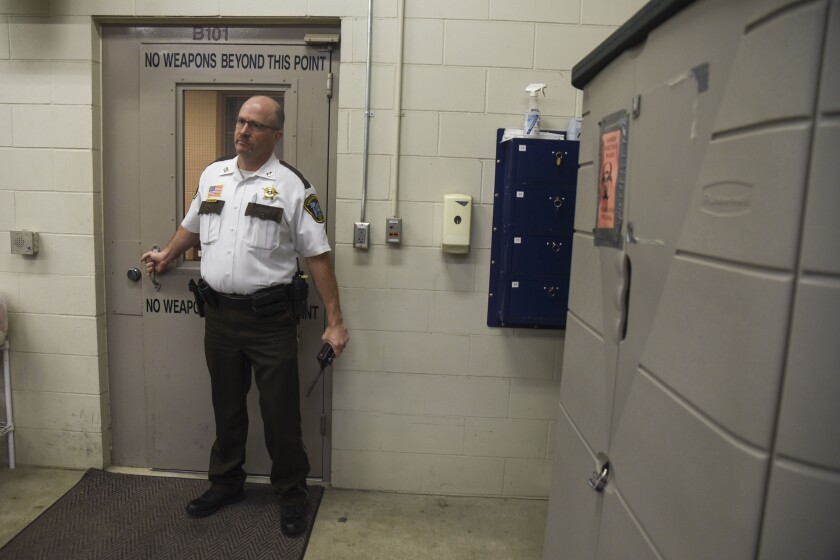Kandiyohi County Jail, located in the heart of Kandiyohi County, Minnesota, serves as a crucial facility in the local criminal justice system. This detention center, while perhaps not widely known outside its immediate region, plays a pivotal role in the incarceration, rehabilitation, and community safety strategies of the county. In this in-depth exploration, we’ll uncover the various aspects of Kandiyohi County Jail, from its history and structure to its programs and challenges.
Historical Background and Structure
The Kandiyohi County Jail, as it stands today, is the result of years of evolution in both design and philosophy. The original facility, constructed in the early 20th century, was a far cry from the modern complex that exists today. Over the years, the jail underwent several renovations and expansions to meet the growing needs of the county and to align with the evolving standards of inmate care and security. The current structure, characterized by its robust security measures and capacity to house a significant number of inmates, reflects a blend of traditional and contemporary correctional philosophies.
Architecturally, the jail is designed to maximize security while providing adequate space for various inmate activities. The facility encompasses multiple units, each catering to different categories of inmates based on factors such as the nature of their offense and their behavior within the institution. These units are equipped with necessary amenities to ensure basic comfort and safety for inmates while under custody.
Inmate Population and Management
The inmate population at Kandiyohi County Jail varies but generally includes individuals awaiting trial, those serving short-term sentences, and others transferred from different facilities for various reasons. The jail administration is tasked with the complex job of managing this diverse population, ensuring that each individual’s rights are respected while maintaining order and safety within the facility.
Inmate management involves a meticulous classification system that determines where inmates are housed within the jail and what privileges or programs they may access. This system takes into account factors like the nature of the crime, behavioral history, and risk of violence or escape. By carefully managing the inmate population, the jail staff strives to reduce incidents of violence, provide a stable environment for rehabilitation, and ensure the safety of both inmates and staff.
Rehabilitation and Reintegration Programs
One of the key aspects of modern correctional philosophy is the focus on rehabilitation and reintegration. Kandiyohi County Jail, in line with this approach, offers various programs aimed at preparing inmates for a successful return to society. These programs include educational and vocational training, substance abuse counseling, mental health services, and other initiatives designed to address the root causes of criminal behavior.
Educational programs often involve basic literacy courses, GED preparation, and sometimes post-secondary education opportunities. Vocational training might include skills like carpentry, culinary arts, or computer literacy, providing inmates with practical skills they can use upon release. Substance abuse and mental health services are also critical, as many inmates struggle with these issues, which can be underlying factors in their criminal behavior.
Challenges and Criticisms
Despite its efforts to provide effective correctional services, Kandiyohi County Jail, like many such facilities, faces its share of challenges and criticisms. One major challenge is overcrowding, a common issue in jails and prisons across the United States. Overcrowding can lead to increased tension among inmates, strain on resources, and difficulties in maintaining effective rehabilitation programs.
There’s also the challenge of funding. Correctional facilities often operate with limited budgets, making it hard to implement new programs, hire sufficient staff, or maintain the facility at an optimal level. This financial strain can impact the quality of services provided to inmates and the overall efficiency of the jail.
Additionally, Kandiyohi County Jail, like many correctional facilities, faces scrutiny regarding its treatment of inmates. Concerns about inmate rights, the use of solitary confinement, and the effectiveness of rehabilitation programs are common criticisms leveled against many jails. Ensuring the humane treatment of inmates while balancing security concerns remains a complex and often controversial aspect of jail administration.
The Future of Kandiyohi County Jail
Looking to the future, Kandiyohi County Jail is likely to continue evolving. This evolution will be shaped by changes in criminal justice policies, advances in correctional practices, and the ongoing need to balance security with rehabilitation. There is a growing emphasis on community-based alternatives to incarceration, which might impact the jail’s inmate population and its role in the wider criminal justice system.
Technological advancements are also likely to play a significant role in the future operations of the jail. From improved security systems to advanced educational and training programs, technology has the potential to enhance the efficiency and effectiveness of the services provided by Kandiyohi County Jail









Leave a Reply